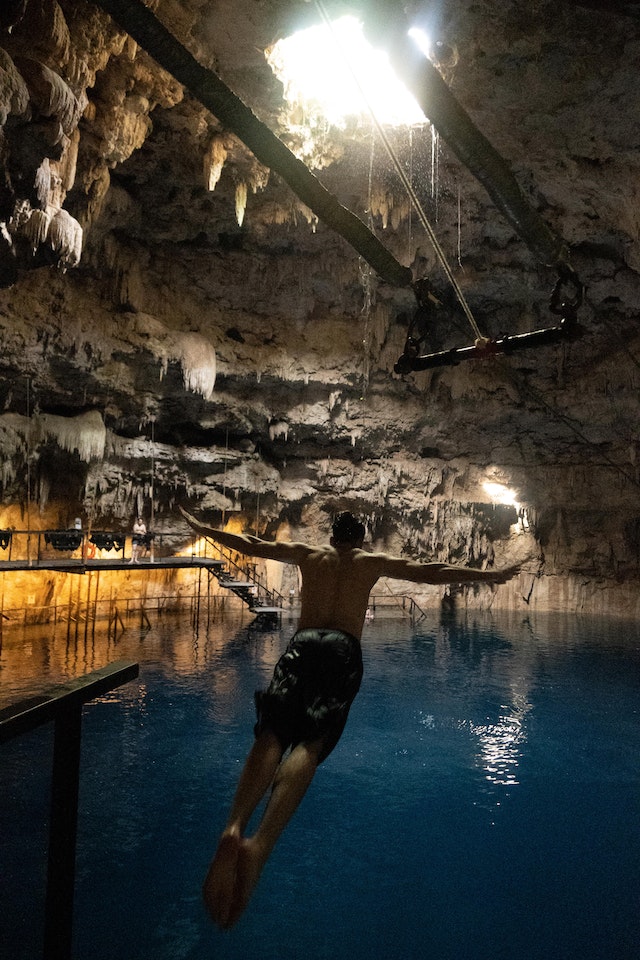Cenotes are naturally occurring deep-water sinkholes that receive water from underground rivers that originate in the earth’s core and are filtered by rainwater. The waters in the cenotes have an average temperature of 24° Celsius, making you feel extremely refreshed after a dive.

The cenotes are one of the most mysterious and beautiful natural elements, giving out adventure and explore vibes whenever you visit one. Cenote Angelita is the most renowned cenote in the Yucatan Peninsula in Mexico and is a must-visit. Just make sure to get the Mexico insurance for San Bernardino before you visit.
What is Cenote Angelia?
Cenote Angelita is a sinkhole located just beneath the Cenote Angelita cave on the Yucatan Peninsula in Mexico. A remarkable underground river, reaching up to a depth of 100 feet, flows beneath the cave. This location, whose name translates to “small angel,” is just 10-15 minutes from Tulum. You have to trek through a dense forest before reaching there, and the journey from beginning to end screams a thrilling adventure. Its beauty and the deep blue color of the water are mesmerizing.
Features of Cenote Angelita
Hydrogen sulfide is the main attraction in Cenote Angelita. Almost 100 feet deep, the hydrogen sulfide is deposited at the river’s bottom until it forms a distinct layer and is heavier than salt, giving rise to a true underwater river. This natural phenomenon is no doubt a unique site in Mexico. When fresh water blends with salt water without oxygen, it leads to bacterial decomposition of organic materials and forms this hydrogen sulfide cloud.
The hydrogen sulfide makes Cenote Angelita a stunning cenote that all divers adore. Between the salt and the freshwater, this layer forms a mythical mist. The cloud of hydrogen sulfide seems to be a riverbed underneath you, replete with numerous tall tree branches and leaves emerging from it. The entire scenery represents some foggy scene you come across while wandering around a forest during the winter.
Only specially trained divers can dive beyond the cenote’s 180 feet of depth. You must pass through this hydrogen sulfide layer to reach the salt water. Because the cloud above you will block out much of the light, keep in mind that it will be dark. Finally, when you journey back up, you will encounter enormous stalactites.
Even the most experienced diver, who has experienced dives in the world-famous dive sites, will find this underwater realm of Cenote Angelia breathtaking, even though there is no marine life to witness these waters. Its natural beauty and mysticism are enough to spellbind you.
However, advanced open water divers with excellent buoyancy control and equipment proficiency should be the only ones to dive in these waters. You must have an Advanced Diver Certificate to dive in Cenote Angelita.
Conclusion
Mexico’s Cenote Angelita is truly a feast to the eyes, and you must visit it at least once in your lifetime. You can book a dive in this region throughout the year. Don’t worry; there are guides to help you with the dive. Just make sure to have Mexico insurance for San Bernardino before visiting.
